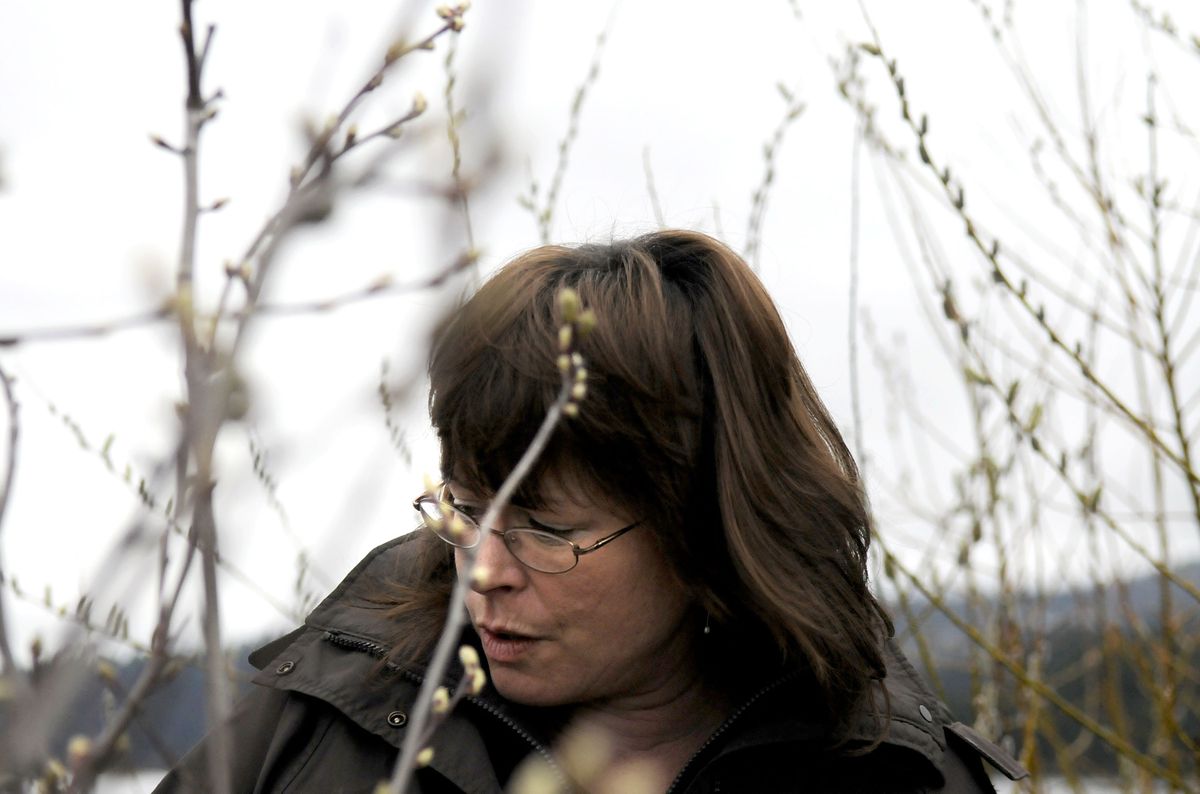Toxic marshes deadly to swans
Coeur d’Alene River laden with lead from Silver Valley mining

ROSE LAKE, Idaho – Even near death, tundra swans are graceful.
Snowy necks arch and flex as the birds – victims of lead poisoning – gasp for breath. Wings rise and fall in rhythmic sweeps, but the birds are too weak to take flight. Their cries are soft, trilling sounds.
Each spring, thousands of tundra swans stop in the marshes along the Coeur d’Alene River as they migrate north to breeding grounds in Alaska. Some never make it out of the marsh.
As they feed on roots and tubers, the swans swallow sediment polluted with heavy metals from mining waste. At high enough levels, the lead shuts down their digestive systems, causing the swans to gasp for air as food backs up into the esophagus and presses against the windpipe. The birds grow emaciated, starving to death on full bellies.
Counting dead swans is a rite of spring for Kate Healy, a U.S. Fish and Wildlife Service biologist. Each year, she finds about 150 carcasses. The yearly survey helps track the toll that mining pollution takes on wildlife in the Coeur d’Alene Basin.
“For me, it’s like bearing witness,” said Healy, an eight-year veteran of the count. “They die slow, agonizing deaths.”
At Strobel Marsh, she pulled out a spotting scope to more closely examine an outwardly peaceful scene. Nearly 100 swans glided across the rippling blue water, grouped in family units. As she scanned the reeds, Healy zeroed in on a swan that had separated itself from the gatherings.
“That’s suspect behavior,” she said. The scope revealed a weak, disoriented bird.
At the marsh’s edge, a mound of white feathers signaled the presence of a swan felled by lead poisoning. The skin between the swan’s eye and bill – called “lore skin” – was visible. In tundra swans, it looks like two yellow tears.
Over the past century, about 100 million tons of mining waste from Idaho’s Silver Valley has washed into the Coeur d’Alene River system, poisoning marshes and wetlands. Strobel Marsh, south of the Rose Lake exit on Interstate 90, is particularly toxic.
Sediments in the marsh have lead concentrations of 5,826 parts per million, which is 10 times higher than the safe limit for waterfowl.
The U.S. Environmental Protection Agency has spent tens of millions of dollars trying to make the Silver Valley safe again for humans. Two years ago, the agency purchased an $875,000 easement on 400 acres of hayfields near Medimont and had the acreage converted into a clean feeding area for waterfowl. Money for the project came from a trust fund established by Asarco Inc., one of the nation’s largest mining polluters.
The project was the first effort to make the basin less lethal for wildlife, said Anne Dailey, an EPA project manager in Seattle. But much work remains. More than 15,000 acres of habitat contains heavy metals in concentrations toxic to waterfowl. Over the next 25 years, the EPA expects to spend $360 million to reduce ecological and human health risks in the Coeur d’Alene Basin.
The Fish and Wildlife Service estimates that 92 percent of swan deaths along the Coeur d’Alene River are caused by lead poisoning. Nationwide, about 29 percent of swan deaths during migration are from lead.
Between 2,000 and 6,000 tundra swans feed along the river each year. Since the flocks are so large, Healy said it’s not clear whether the annual loss of roughly 150 swans is affecting the population’s overall viability.
Heavy metals harm more than swans. Researchers have documented lead exposure and related health problems in at least 26 other wildlife species in the Coeur d’Alene Basin, including beavers, screech owls, field mice, wood ducks, robins and song sparrows.
But mortality is harder to track in other species. Unlike tundra swans, other animals don’t leave “a big, white carcass,” said Roy Brazzle, a biology technician with the Fish and Wildlife Service.
“I haven’t seen a little songbird die of blood poisoning,” Healy said. That doesn’t mean it doesn’t happen, she added.
Because scavengers quickly reduce remains to piles of feathers, even the swan deaths may be underestimated, the biologists said.
Healy and Brazzle checked multiple marshes and wetlands along the river this week. As they unlocked a gate and drove into Mike and Brenda Schlepps’ private property along Highway 3, Healy relaxed into a smile.
The Schlepps’ former hayfields were flooded to create a new marsh. Swans and other waterfowl are gradually discovering it. In a few years, native water plants will re-establish themselves in the marsh, making the old hayfield even more attractive as a wildlife food-and-rest stop.
“This is safe feeding,” Healy said. “I love to see the swans here.”